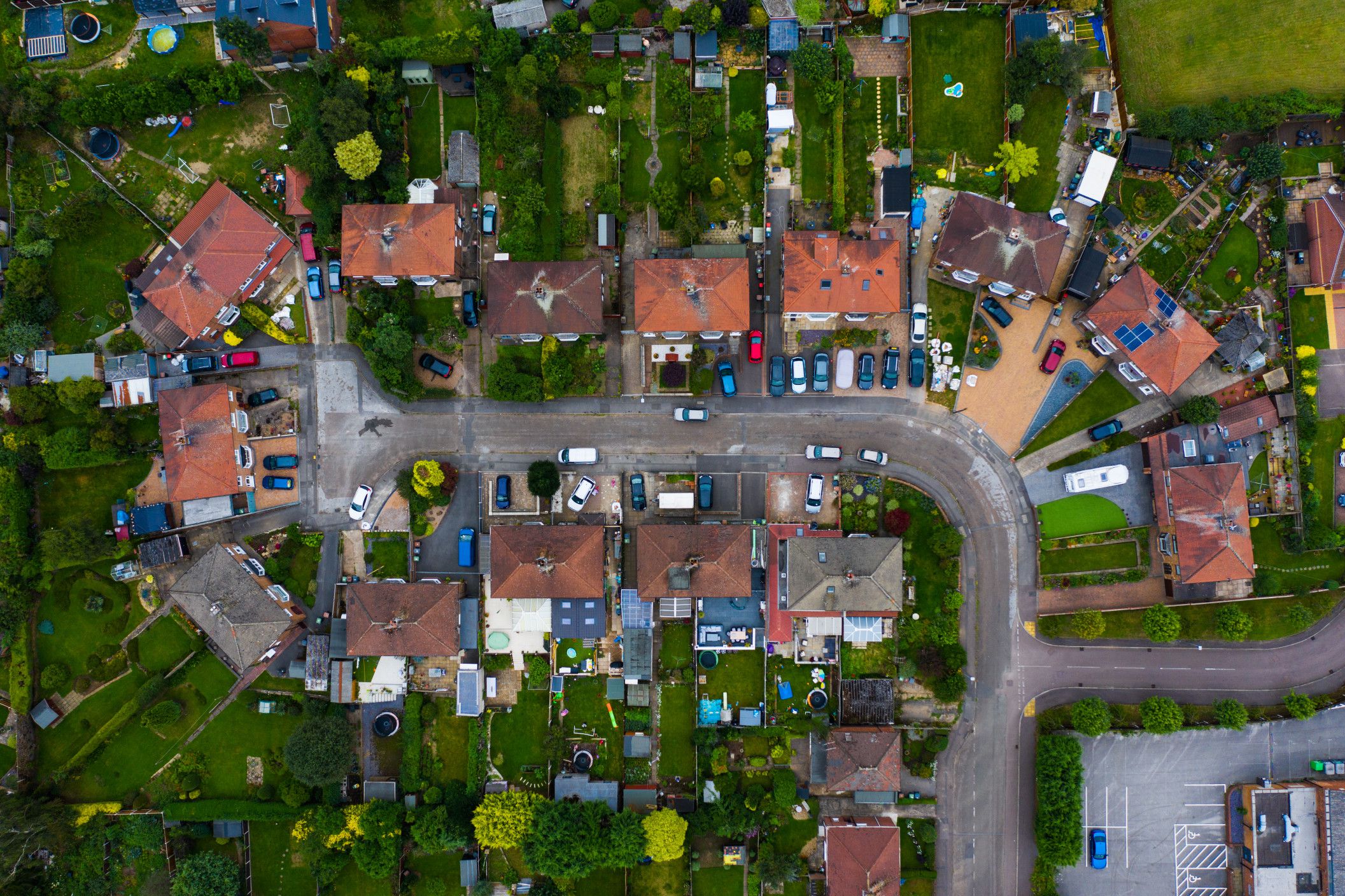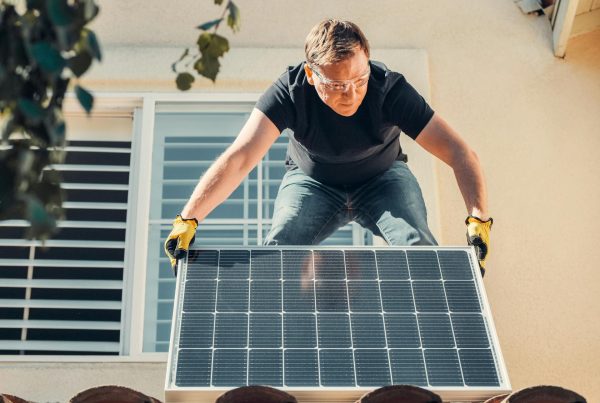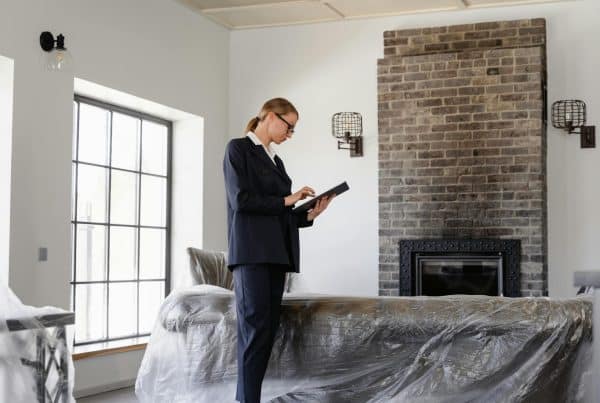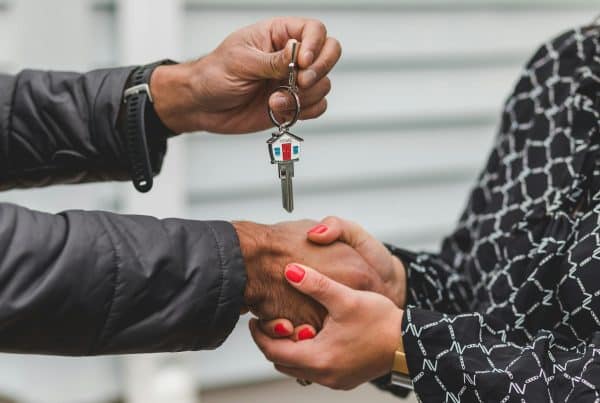Pros and Cons of Living On A Cul-de-sac
Cul-de-sacs are a staple of American culture, and for many people, they bring back memories of the good old days—kids playing on the street, block parties, and street side conversations.
Finding a great home on a cul de sac is the dream for many people, but the truth is, there are also a lot of people who don’t want to live in such an environment.
If you’ve never lived on a cul-de-sac before and you are looking to buy a home, you may be wondering which camp you’ll end up in.
To help you answer this question, we’ve put together two short lists of pros and cons for your consideration.
4 Reasons Why You’ll Love Living On A Cul-de-sac
Did you know that cul-de-sacs were first approved by the Federal government back in 1936?
Although they were certainly built before this period, this was when developers began building them in earnest in communities across America.
Fast forward 86 years to the present, and the benefits of cul-de-sacs are more apparent than ever. Let’s take a look at them.
1. Cul-de-sacs Are Safer
An interesting study of Cul-de-Sacs in Durham, N.C. found that “for every crime committed in a community based around a cul-de-sac, there are nearly 5 committed in a related community along a two-way street.” Whittaker (2014).
There are different speculations as to why cul-de-sacs are safer than two-way streets, but one commonly stated reason among experts is high visibility and line of sight.
The circular arrangement of cul-de-sacs makes it difficult for someone to do something they shouldn’t. We would like to point out, however, that other studies have shown exceptions to the cul-de-sac safety trend.
Houses on cul-de-sacs that are easily accessible through footpaths and driveways, for instance, are not immune to burglaries and can in fact be quite problematic.
So, essentially:
Cul-de-sacs, If They Have The Right Design, Are Likely To Reduce Crime
Reducing crime, though, isn’t the only reason why cul-de-sacs are preferred by many people. Let’s look at the next reason why.
2. Cul-de-sacs Have Less Traffic
Low traffic volumes are one of the big reasons why people want to live on cul-de-sacs.
If you have a home on a cul-de-sac, then there isn’t much incentive for people to visit your street other than they live there or are visiting someone they know.
They might also be lost, want to buy a home, or they may be a professional providing a service of some kind.
Cul-de-sac homes in this respect are the opposite of busy street corners where you never know who might be driving by. The range of visitors is limited.
A Lot Of Parents Desire Homes That Have Low Traffic
If you live in a suburban neighborhood or have ever visited one, you might have seen the occasional vehicle racing down the street and putting pedestrians at risk.
The fear of a reckless driver hitting a child is one of the strongest motivators that parents have for buying homes in low-traffic areas.
If you prefer a relatively traffic-free street that reduces the likelihood of your child or pet getting hit by a vehicle, then the cul-de-sac life may be perfect for you.
3. Cul-de-sacs Foster A Community Environment
Circles are interesting. Metaphorically, they represent equality. They also represent community. Everyone’s heard the term “the community circle” before.
Interestingly enough, cul-de-sacs may have a significant impact on how people interact with each other due to their circular designs.
A study out of the University of California-Davis showed that kids who live on cul-de-sacs play outside more often than kids who live on two-way streets. Cul-de-sac dwellers also tend to borrow each other’s tools more often.
Some urban planners have posited that cul-de-sacs help you make friends simply by way of proximity, which is part of their charm.
The cul-de-sac is the classic place to be if you’re looking to have a block party, Halloween get-together, or simply have a conversation with your neighbor at the mailbox.
4. Cul-de Sac Homes Tend To Have Larger Backyards
Typically, cul-de-sac homes have larger backyards than houses that are located on two-way streets. If you ask the majority of people, they will agree with you that having a big backyard is ideal.
6 Reasons Why You May Not Want To Live On A Cul de sac
While many buyers seek homes on cul de sacs (and are willing to pay a premium for the privilege), the cul de sac life does come with downsides.
Let’s explore what they are.
1. Cul de sacs Can Have Bad Neighbors
One of the big disadvantages of living on a cul de sac is that you might end up having bad neighbors.
Of course, if you have good neighbors, then the interaction you have with your community is amazing. Bad neighbors, on the other hand, can put you in a position of having to deal with uncomfortable situations on a regular basis.
What happens, for instance, if your loud, messy, nosy, or rude neighbor does something you can’t ignore?
Parking disputes, aggressive animals, excessively loud parties—these are all issues that can come up when living the cul de sac life.
To be fair, these same issues can come up when you’re living on a two-street. It’s just that they are somewhat amplified in the cul de sac setting.
2. Cul de sacs Have Less Parking
If you’ve ever lived on a cul de sac or visited one before, then you’ve probably seen how overcrowded they can get.
Parking on a cul de sac can sometimes feel like a game of musical chairs, especially if the homes in the development don’t have big driveways or if there are several large, multi-vehicle families present.
A lack of parking space is one of the more serious issues that cul de sacs face, and not all community planners know how to mitigate the problem.
3. Cul de sacs Have Less Accessibility
We’ve already been over that cul de sacs provide you with the benefit of having less traffic. The downside to this is that your house can be somewhat harder to reach.
Emergency vehicles like fire trucks might have a hard time navigating your street during an emergency. And in extreme cases, they might not even be able to reach you.
You might also have to deal with a lack of access. If something blocks the road, such as a downed power line, a tree, or even heavy snowfall, you won’t have a way to leave your home….Cul de sacs only have one point of exit and entry, after all.
Note: If you live in a snowy area, one of the things we would recommend getting is a snowplow, which will help you if you ever find yourself hemmed in by snow. Obviously, this is not necessary for Las Vegas.
4. Not Everyone Wants To Deal With Kids And Young People
A Lot of families are drawn to cul de sacs because of their family-friendly vibe. Ironically enough, this is a drawback to people who don’t want to deal with kids.
The more kids that are around, the more likely it is that you at some point will have to deal with loud noises, unattended children, kids racing by on bikes and skateboards, street sports, pranks….flying objects.
A stray baseball breaking a house window or a vehicle’s windshield or someone denting a mailbox are not out of the realm of possibility.
It’s also sort of a given that kids will enter your yard. You might wake up one day to find that your front yard has been turned into a makeshift football field.
If you’re looking for a quiet, relaxing environment, then a cul de sac with a lot of young families living there is not for you.
Fortunately, though, there are plenty of cul de sacs that are intended for retirees.
If you’d like to live on a cul de sac and enjoy peace and quiet, you just need to be careful about what area you choose to live in.
5. Cul de sacs Have Higher Property Prices
Did you know that cul de sac homes cost 20% more on average than homes located on two-way streets?
Given the extra cost, unless you have a strong reason for wanting to buy a home on a cul de sac, it may be a good idea to choose something else.
6. Cul de sacs Have Less Privacy
While having less privacy can certainly help disincentivize crime and create a safer environment, it can also be annoying to those who don’t want people seeing everything they do.
Living on a cul de sac means that there will always be eyes on your house, just by way of the design.
Naturally, this degree of exposure can lead to social issues.
You may not want to, for example, invite all of your neighbors to your house party. But if you don’t, the other families on the street will notice.
This can make for awkward interactions when you’re out walking your dog or checking your mailbox.
You might also end up dealing with a nosy neighbor who watches everything you do, from when you check your mailbox to when you clean out your garage.
The Big Question: Is A Cul de sac Right For You?
Whether or not you should get a cul de sac home really depends on what you’re looking for. If you’re uncertain about whether or not the cul de sac life is right for you, we’d love to dive deeper into the subject with you.
You can call us at (702) 310-6683 to get started.
Work With Us To Get Your Next Investment Property
The Real Estate Guy is the go-to resource for anyone looking to buy or sell homes in and around the Las Vegas area.
We are a highly experienced team that has been serving clients with a high rate of satisfaction for years.
Our Reviews
In the last 12 months alone, we have completed 252 sales with top-notch ratings on Google, Zillow, and our website.
We Are Committed To Your Success
Our experience means that you are in good hands. We always go the distance to help you find what you are looking for and to make sure that you are 100 percent satisfied.
Our mission is to help you find your dream home, whether it be in a suburban community, the city, or the countryside.
To make sure we adequately meet your needs, we’ll start by having a conversation with you about your preferred home, your budget, and where you see yourself living now and in the future.
We’ll also discuss your preferred schools, what you like to do for fun, whether or not you want to find a local church community, and much more.
Once we build a profile of your PERFECT dream home, we’ll task our real estate experts with finding it for you.
We Never Pressure You Into Making A Decision
When we work with you, we never pressure you into making a decision. Instead, we educate you on what we think is a good choice based on your specific needs and then let you make a judgment call.
Our Team Members Have Direct Lines Of Communication
To ensure we provide you with exceptional customer service, we follow a time-tested process.
All of our team members, including our transaction coordinator, concierge, and marketing director, can be contacted directly if you have any questions.
We are also proactive in reaching out to you, meaning you don’t have to take the initiative to call us. Our concierge is here to actively provide you with assistance during the buying or selling process.
We Can Help Provide Resources For You
Whether you need to find a mortgage company, speak with an inspector, hire a contractor, or get the right insurance, we can help. We will put you in contact with resources that make buying and selling homes a whole lot easier.
The Real Estate Guy team has a broad network and knows several professionals in and around the Las Vegas area.
We can put you in contact with resources in Las Vegas, North Las Vegas, Henderson, Mount Charleston, Mesquite, Boulder City, Summerlin, Green Valley, Lake Las Vegas, and Pahrump.
To learn more, call us at (702) 310-6683.
You can also use our Contact Form to get a hold of us.
Further Reading: History of Cul-de-sacs
Cul-de-sacs have an interesting history dating all the way back to ancient Greece, Rome, and Egypt. Interestingly enough, some of the earliest examples of cul-de-sacs are to be found at the Pyramid of El-Lahun.
Cul-de-Sac Definition
The word cul de sac is a French word that means “bottom of the sack,” which makes sense given their design.
While cul-de-sacs are dead-end streets, they are also designed to be a lot more appealing than your average dead-end, both visually and practically. Not only do cul-de-sacs look better than your typical dead-end street, but they also provide you with an easy way to turn around.
With this in mind, you might be wondering what cul-de-sacs were used for before vehicles were invented. Well, they had other purposes, including military ones.
The Greeks and Romans used them to close off roads and form workable systems of defense in the event of an invasion. They had a similar purpose in Europe during the Middle Ages.
The Modern Cul-de-sac
Strangely enough, despite their centuries-long use, cul-de-sacs didn’t become a major part of housing until the 19th and 20th centuries.
The fathers of the modern cul de sac are Barry Parker and Raymond Unwin, who pointed out that cul-de-sacs provide a safer and more spacious environment for residents—a sharp contrast to the dense urban environments of the 18th and 19th centuries.
England is centrally responsible for popularizing their use, thanks to the Hampstead Garden Suburb Act in 1906.
Now, more than 100 years later in 2022, their use is being questioned in the UK, the United States, and elsewhere, which is certainly a big change from previous decades.
While cul-de-sacs are obviously still an important part of urban development, whether or not they will remain so moving into the future is left to be seen.
Many people view cul-de-sacs as poor urban planning—a change in perception largely due to increasing population levels and the need to maximize the use of space.
In 1900, there were only about 2 billion people on the planet. Today, there are nearly 8 billion.
Consequently, perceptions have changed to favor dense urban planning and to disfavor lower-density areas, which are increasingly being thought of as inefficient and potentially wasteful.
Whether or not cul-de-sacs are actually as bad as some experts claim is up for debate. Many urban planners still support their use, and a lot of people love living on them.
Are Cul-de-sacs Helpful or Harmful?
One look at an urban planning map will show you the difference between the grid-like designs of the inner city and the organic, sprawling lines of suburbia.
The immense contrasts between these forms of urban planning bring us to the central question—which one is better?
Cul-de-sacs are in some sense the post World War II dream. A nice home in a safe, quiet environment away from city pollution and crime. Who wouldn’t want that?
Millions of middle-class Americans have asked this same question from the 1950s until today.
But back then (some experts claim), the move made more sense…and now, it is economically and environmentally untenable.
Suburbs and cul-de-sacs take up a lot of space and require families to drive farther and more frequently than if they lived in denser urban areas with quick access to amenities.
This is an issue for many families with today’s inflation and rising gas prices.
Low location efficiency is costly….Which is why many urban planners argue that cities are better for families today, especially older cities that were designed before cars were invented.
Older cities have incredibly high location efficiency since they were designed specifically for pedestrians.
Families that need to save money on the cost of owning a vehicle could benefit from walking or taking the local rail line to important amenities.
Environmental Impacts
Location efficiency, or the lack thereof, also has environmental impacts. Studies have shown that roads absorb heat, both via direct sunlight and through the friction created by tires. Since roads act as heat absorbers, they may be furthering climate change.
Since cul-de-sacs are vehicle-centric, they may also be part of the problem, which importantly, was much less pronounced when cul-de-sacs first came into popular use.
Cul-de-sac development began in earnest in the United States when the global population was around 2.5 billion. Today, it is nearly 8 billion.
The difference here is staggering and fundamentally changes the debate around how we should be designing our residential areas, according to many urban planners.
Helpful or Harmful Summary
With that said, there are reasons why cul-de-sacs exist.
Cul-de-sacs were popularized to help people avoid the worst of the inner cities. It’s just that some urban planning experts today argue that developers of the past went too far in exploiting their usefulness.
Case in point, after World War II, nearly every major housing development contained cul-de-sacs.
This leads us to where we are today.
Summary
The two big arguments on the side of the anti cul-de-sac crowd are that (1) we need to be more efficient with our use of space and resources and (2) we need to return to the old model of city design, i.e., designing cities for people, not vehicles.
Meanwhile, the pro cul-de-sac crowd argues that cul-de-sacs help families escape pollution, crime, and the rent cycle.
Both sides have compelling arguments, which leaves us curious to see how the future of cul-de-sac development will unfold.







